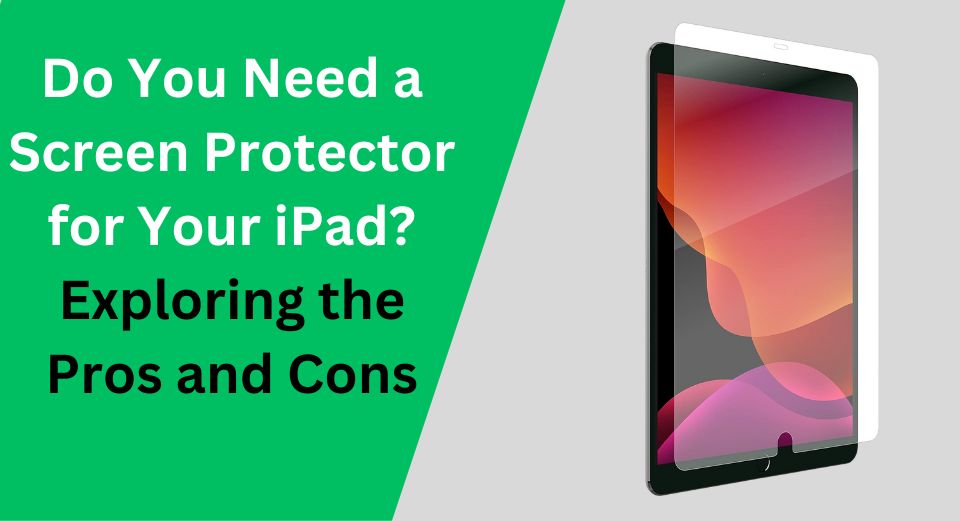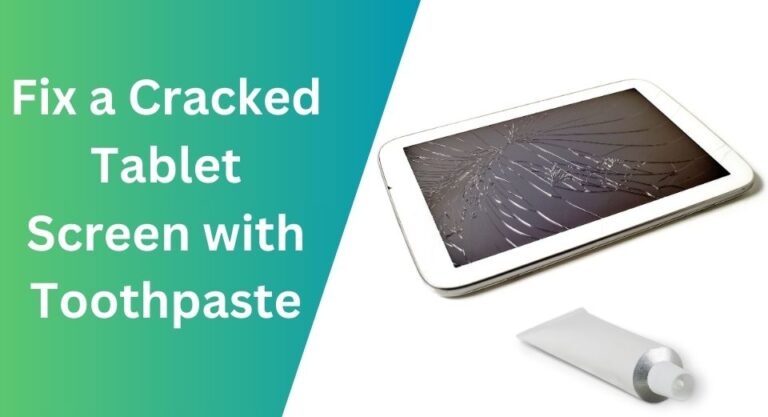In the fast-paced world of technology, where our devices have become extensions of our daily lives, you’ve finally got your hands on that shiny new iPad. It’s a beautiful piece of technology that opens up a world of possibilities, from creative projects to binge-watching your favourite shows. But as with any beloved gadget, the question arises: “Do you need a screen protector for your iPad?”Let us examine this subject and evaluate the advantages and disadvantages to help you decide which is ideal for your technical partner.
The Importance of Screen Protection
Imagine this: You’re engrossed in a captivating eBook or working on an important presentation, and then it happens – a small scratch marks your iPad screen. Ouch! While iPads are designed to be durable, they’re not invincible. Screen protectors act as a shield against the hazards of everyday life, like keys sharing space in your bag with your precious device. Plus, repairing or replacing a cracked screen can cost a pretty penny, so a little prevention goes a long way.
Advantages of Using a Screen Protector
Now, onto the good stuff! Let’s talk about why investing in a screen protector might just be the best decision you make for your iPad.
- Protection Against Scratches: Life is full of little surprises, and not all of them are pleasant. A screen protector acts as a first line of defence, ensuring that accidental run-ins with sharp objects don’t leave their mark on your display.
- Defence Against Drops and Impacts: We’ve all been there – a momentary lapse in grip, and suddenly your iPad is free-falling. A quality screen protector can absorb some of the impact and minimize the chances of your screen shattering into a web of cracks.
- Say Goodbye to Smudges: Your fingers are wonderful tools, but they leave behind a trail of smudges and fingerprints that can mar your screen’s clarity. A screen protector helps in repelling oils, keeping your screen looking pristine.
- Maintaining Resale Value: If you’re someone who likes to stay updated with the latest tech trends, having a well-maintained iPad can fetch you a better resale value. A screen protector safeguards your display, making your device more appealing to potential buyers.
You can also check: How to Connect a Stylus Pen to iPad?
Different Types of Screen Protectors
When it comes to screen protectors, not all are created equal. There are mostly two categories you will run into:
1. Tempered Glass Protectors:
Think of these as the armoured knights of screen protectors. They provide robust protection while maintaining touch sensitivity and display clarity. Plus, they’re a breeze to clean.
2. Plastic Film Protectors:
If you’re a stickler for the original feel of your iPad screen, these thin protectors might be your go-to choice. They’re affordable and easy to replace, but keep in mind they might not offer the same level of impact protection as tempered glass.
Potential Drawbacks of Using a Screen Protector
While screen protectors offer a world of benefits, there are a few things to keep in mind:
- Installation Challenges: Ah, the dreaded air bubbles. Installing a screen protector perfectly can be a bit tricky, and those air bubbles seem to have a mind of their own. But fear not, with a little patience and finesse, you can get them under control.
- Touch Sensitivity and Display Clarity: Some screen protectors might slightly alter touch sensitivity or display clarity. It’s essential to choose a high-quality protector to minimize these effects.
- Maintenance and Cleaning: Just like your iPad screen, the protector can gather dust and smudges. Regular cleaning is necessary to ensure your viewing experience remains top-notch.
Factors to Consider When Deciding
The decision to use a screen protector boils down to a few key factors:
- Intended Use: Are you a digital artist relying on precise touches, or a casual user catching up on shows? Your usage dictates the level of protection you might need.
- Personal Preferences: Your iPad is an extension of your style. Some users prefer the feel of a bare screen, while others prioritize protection.
- Budget: Screen protectors come in a range of prices. It is vital to strike a balance between the level of security you want and your budget.
Expert Opinions and User Experiences
Don’t just take our word for it. Tech experts and fellow iPad users have their say on this topic. Many emphasize the peace of mind that comes with a good screen protector, especially if you’re prone to accidents.
Read more: Where is Wordle clipboard on iPad?
Tips for Proper Screen Protector Installation
Applying a screen protector is an art in itself. For a seamless installation, listen to the following steps:
1) Clean the Screen
Before applying the screen protector, ensure your iPad’s screen is free from dust, fingerprints, and smudges. Use a microfiber cloth and a gentle screen cleaner to wipe it down thoroughly.
2) Follow the Instructions
Most screen protectors come with detailed instructions. Before commencing the application procedure, carefully read them. Different protectors may have slightly varying installation steps.
4) Align Carefully
Start by aligning the screen protector with the edges of your iPad’s screen. Many protectors have guide stickers or tabs to help you position it accurately.
5) Peel Off Backing
Once aligned, gently peel off a small portion of the backing from the screen protector. Do not let your fingertips touch the side that is adhesive.
6) Apply Gradually
Slowly lower the exposed section of the protector onto the screen, ensuring it aligns with the edges and any openings (like the home button or camera). Use a credit card or the provided squeegee to smooth out the protector as you go.
7) Smooth Out Air Bubbles
As you lay down the protector, air bubbles may form. Gently push them toward the edges using the credit card or squeegee. Start at the middle, then move outward.
8) Remove Remaining Backing
Continue peeling off the backing while simultaneously pressing down the protector. Take your time to prevent air bubbles and misalignment.
9) Address Persistent Bubbles
If stubborn bubbles persist, you can use a piece of clear tape to lift the protector slightly and reapply that section.
10) Final Inspection
Once the protector is in place, give it a thorough inspection. Check for any remaining air bubbles, misalignment, or imperfections.
Also recommended: Why is my iPad not charging?
So, do you need a screen protector for your iPad? It all comes down to your usage, preferences, and how much peace of mind you want. If you’re a cautious user who wants to keep your iPad looking and functioning at its best, a screen protector might just be your new best friend. Remember, the investment you make in protecting your iPad now could save you from headaches and expenses down the road. Happy scrolling and tapping, with a pristine screen to boot!




